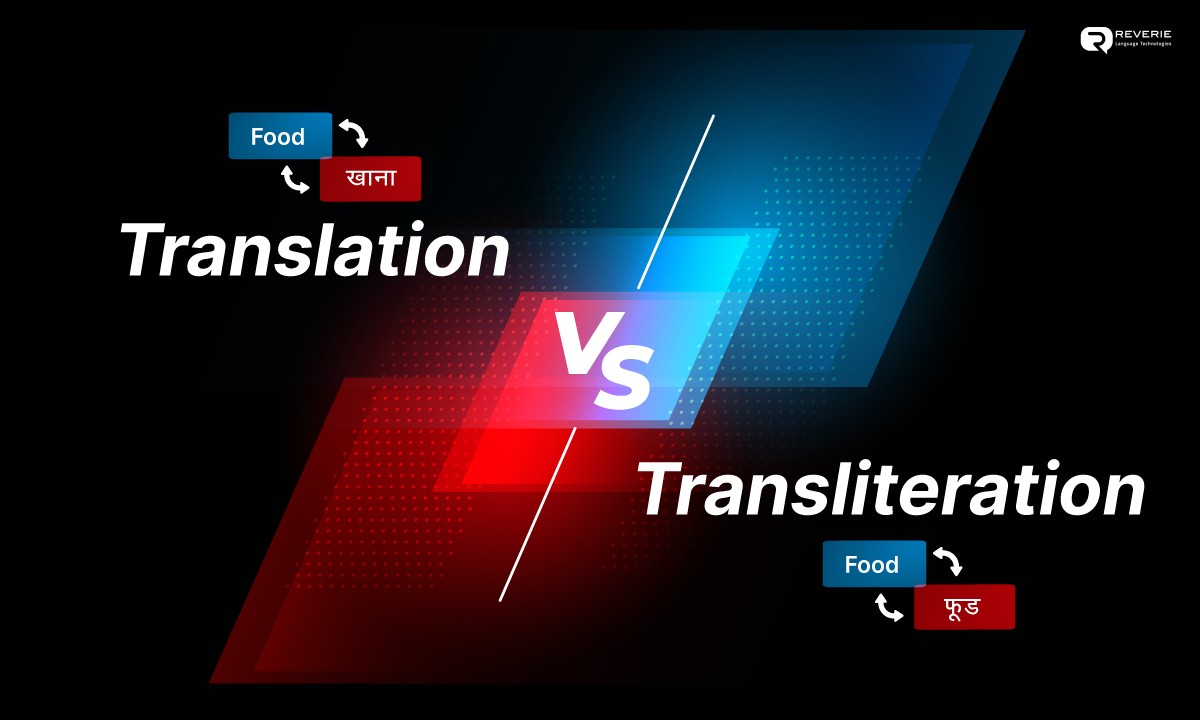
Translation v/s Transliteration - Know Your Facts
Picture yourself in a Chinese restaurant, gazing at a menu that reads 'Chow Mein Soup.' If those words were written in Mandarin, you might find yourself in a bit of a linguistic quandary. However, when 'Chow Mein' is accompanied by the English version, clarity dawns. The question is, is it translation or transliteration?
Many may mistakenly label it as translation, but in reality, it's transliteration. The distinction between these two language services is a common source of confusion, and we've been there too, often fielding inquiries about our translation and transliteration API solutions. So, let's set the record straight and shed light on their differences.
Understanding the Terms: Translation vs. Transliteration
Translation is the art of converting text from one language to another, ensuring that the translated content conveys the same meaning as the original, albeit in a different native tongue. For instance, the English word 'Shoes' translates to 'जूते' in Hindi.
Transliteration, on the other hand, doesn't provide the meaning but helps users pronounce words in an unfamiliar language using their native tongue's characters. For 'Shoes,' the Hindi transliteration is 'शूज,' allowing you to read it phonetically.
Now, here's an intriguing fact that shows commitment to customer experience and satisfaction: German auto giant BMW used transliteration to change its name to 宝马的音译 (Bǎomǎ de yīnyì) for the Chinese market. BMW is an acronym for Bayrische Motoren Werke AG, or in English, Bavarian Motor Works. The Chinese name of the company is 宝马 (Bǎomǎ) and it means “precious horse“, emphasizing their commitment to understanding the local audience.
Translation vs. Transliteration API - Key Differences
While both translation and transliteration convert text into another language, they have distinct purposes and applications:

Translation and Transliteration: In One Document
Integrating both translation and transliteration in a single document can be a strategic approach to serve a diverse audience. This combination not only ensures cultural accuracy for those seeking content meaning but also maintains the integrity of the original script for those more comfortable with pronunciation.
Before implementing both translation and transliteration together, consider the following pointers:
Italicizing and Capitalization: When translating or transliterating, make sure the text stands out by capitalizing and italicizing it as needed.
Source text: Hello. How are you?
Translation: नमस्ते, आप कैसे हैं?
Formatting: There are two formats, where the translation can come before transliteration or vice versa. Your business can choose either format within the same document but maintain consistency throughout the conversion.
Source text: “Hello. How are you?”
Format 1: “नमस्ते. हाउ आर यू?“
Format 2: “हेलो. आप कैसे हैं?”
In the first format, the translation precedes the transliteration, providing immediate access to the meaning in the target language. Conversely, in the second format, transliteration is presented first, allowing those familiar with the original script to connect with the content before delving into the translated version.
Frequency: Depending on your target audience's familiarity with the source language, determine how often you need to use both techniques. If your audience is well-versed in the original script, you can increase the frequency of transliteration. On the other hand, if your audience is less familiar with the source language, using more translation can enhance their understanding of the cultural context.
Translation or Transliteration: What Suits Your Business Best?
Choosing between the translation API and the transliteration API hinges on your input's purpose and your intended audience. The translation API offers various benefits. Opt for it if you need to convert content into a specific native language while retaining localization to meet your business requirements. On the other hand, if pronunciation is your primary concern, the transliteration API is the way to go.
For instance, if you plan to expand your business in a country where your company name is challenging to read, using transliteration ensures that native speakers can correctly pronounce your brand name, fostering more effective connections.
Frequently, a combination of both techniques proves to be a potent strategy, delivering a comprehensive understanding and accurate representation for a diverse audience.
Reverie's Translation and Transliteration Solutions
Reverie's experts leverage both the translation API and transliteration API to keep your website and applications at the forefront of the ever-changing landscape. We seamlessly translate your content and applications using machine translation while maintaining consistent pronunciation across multiple scripts, unifying your brand's identity.
With Reverie, you can spark meaningful conversations and drive growth in a dynamic marketplace.
Also. check out our text-to-speech and speech-to-text API here:
Text-to-speech API: https://reverieinc.com/api-product/translate/
Speech-to-text API: https://reverieinc.com/api-product/speech-to-text/